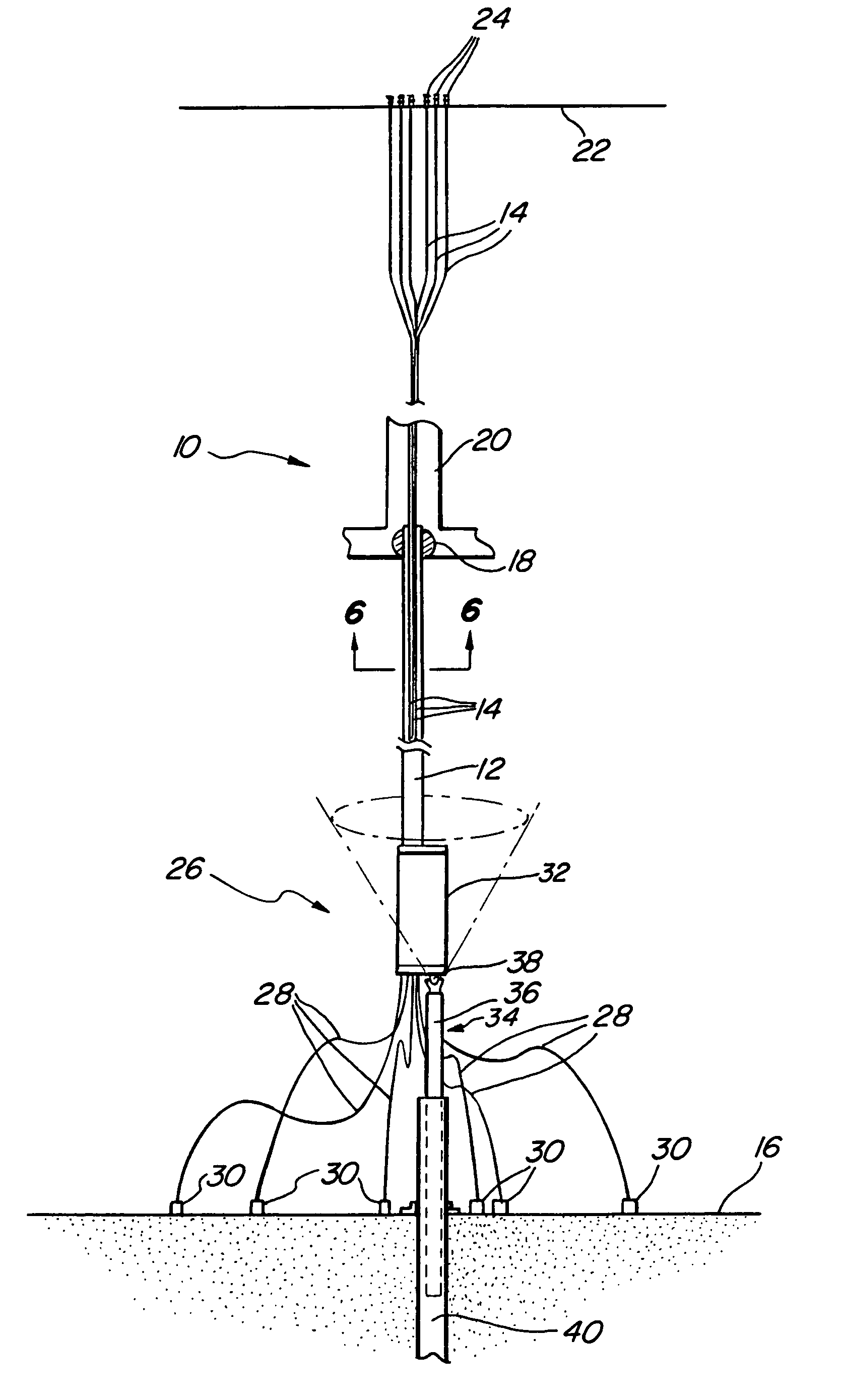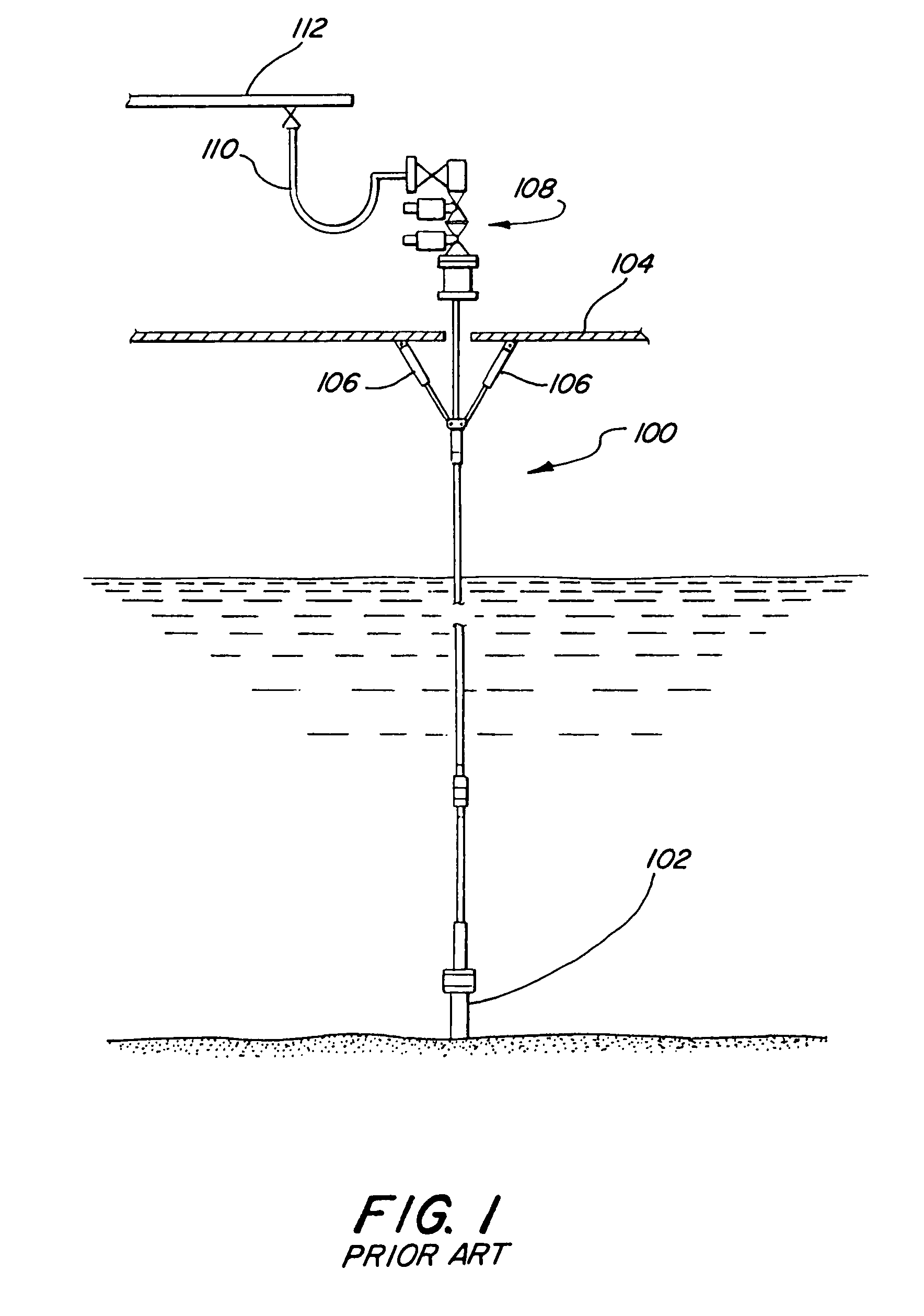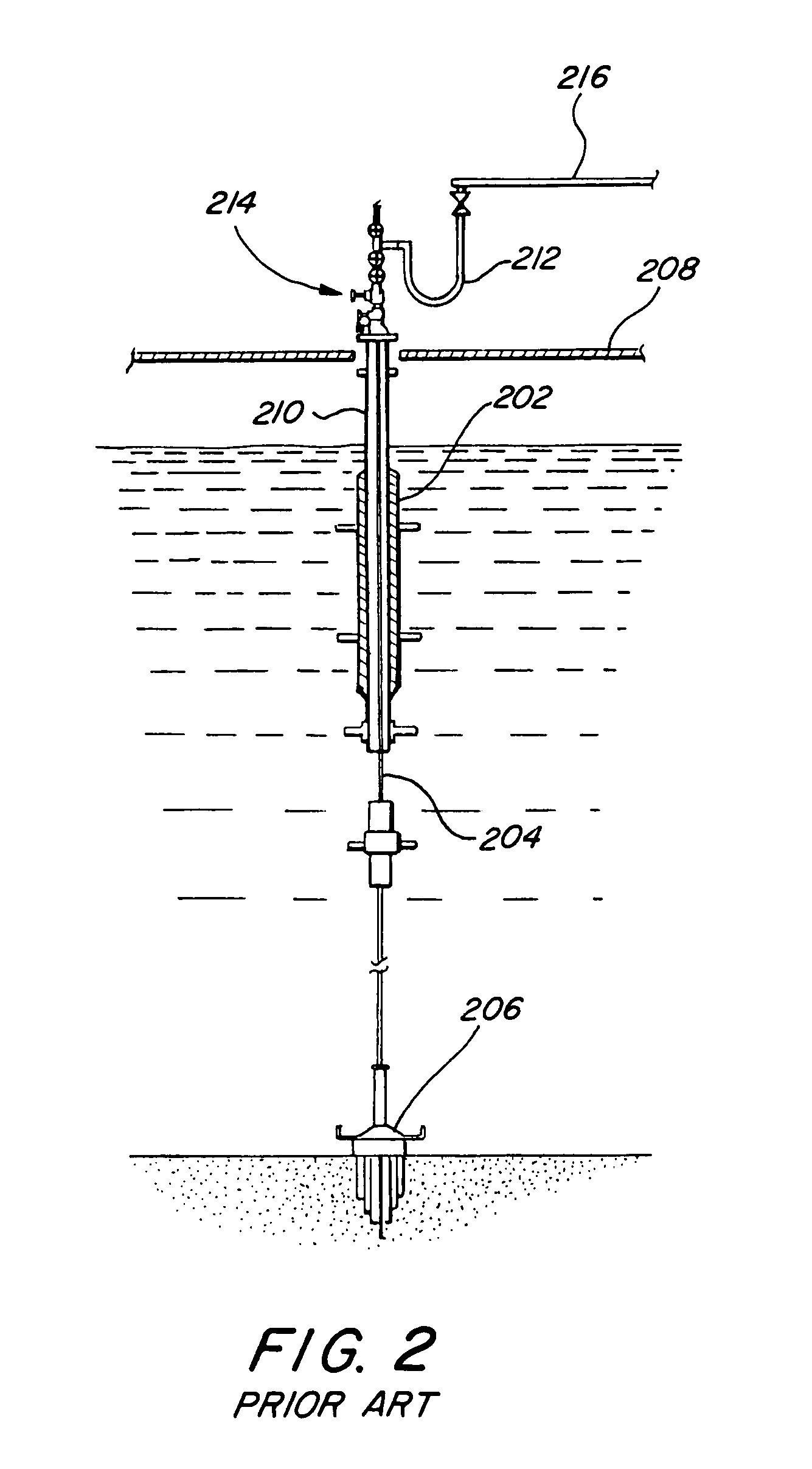Bottom tensioned offshore oil well production riser
a technology of oil wells and risers, which is applied in the direction of drilling pipes, drilling/well accessories, sealing/packing, etc., can solve the problems of increasing the cost of the tensioning system, prohibitively expensive to deploy, and insufficient stability, so as to achieve simple fabrication and deployment and reliable operation.
- Summary
- Abstract
- Description
- Claims
- Application Information
AI Technical Summary
Benefits of technology
Problems solved by technology
Method used
Image
Examples
Embodiment Construction
[0035]A first exemplary embodiment of a bottom tensioned offshore oil well riser system 10 in accordance with the present invention is illustrated in the elevation view of FIG. 5. The exemplary riser system illustrated comprises a tubular casing or conduit 12 enclosing a plurality of individual tubular riser pipes 14 suspended from a floating platform (omitted for clarity) and extending downward substantially vertically toward the sea floor 16 through a flexible joint 18 located at the keel 20 of the floating platform. Each of the individual riser pipes 14 extends upward to a well or production deck 22 of the platform, and is terminated thereat by an individual tree 24.
[0036]A bottom end connection and tensioning assembly 26 is attached to the bottom end of the conduit 12 at a distance of about 50 to 150 feet above the sea floor. The connection and tensioning assembly comprises jumpers 28 that connect the bottom end of each riser pipe to a respective sub-sea well equipment 30, a wei...
PUM
 Login to View More
Login to View More Abstract
Description
Claims
Application Information
 Login to View More
Login to View More - R&D
- Intellectual Property
- Life Sciences
- Materials
- Tech Scout
- Unparalleled Data Quality
- Higher Quality Content
- 60% Fewer Hallucinations
Browse by: Latest US Patents, China's latest patents, Technical Efficacy Thesaurus, Application Domain, Technology Topic, Popular Technical Reports.
© 2025 PatSnap. All rights reserved.Legal|Privacy policy|Modern Slavery Act Transparency Statement|Sitemap|About US| Contact US: help@patsnap.com



